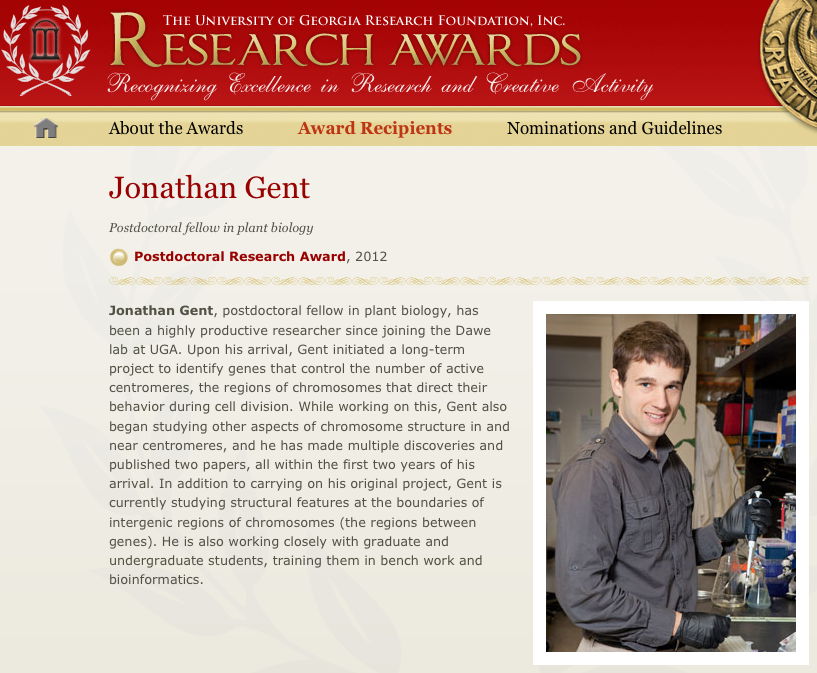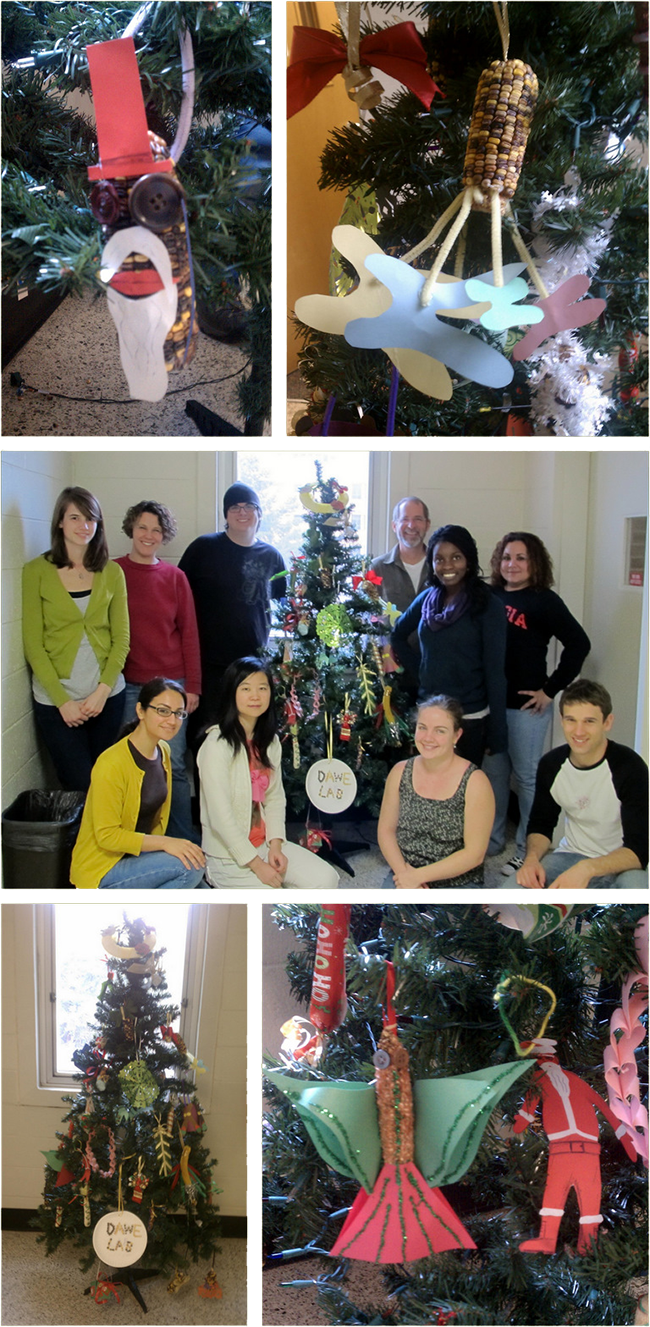Congratulations Jonathan! Postdoctoral Research Award
Jonathan Gent was selected to receive the University of Georgia Research Foundation’s Postdoctoral Research Award. Created in 2011, Postdoctoral Research Awards recognize the remarkable contributions of postdoctoral research scholars to the UGA research enterprise. The UGA Research Foundation funds up to two awards a year to current scholars.
Dr. Dawe is recognized as Distinguished Research Professor
Dr. Dawe was awarded the Distinguished Research Professorship for 2011. This award is given to honor academicians here at the University of Georgia whose work is recognized as being of the highest levels of creativity by national and international leaders in the discipline.
In acknowledgement of this honor, Dr. Dawe was recognized at halftime during the recent UGA v. Kentucky football game. Looks like he had a good time!
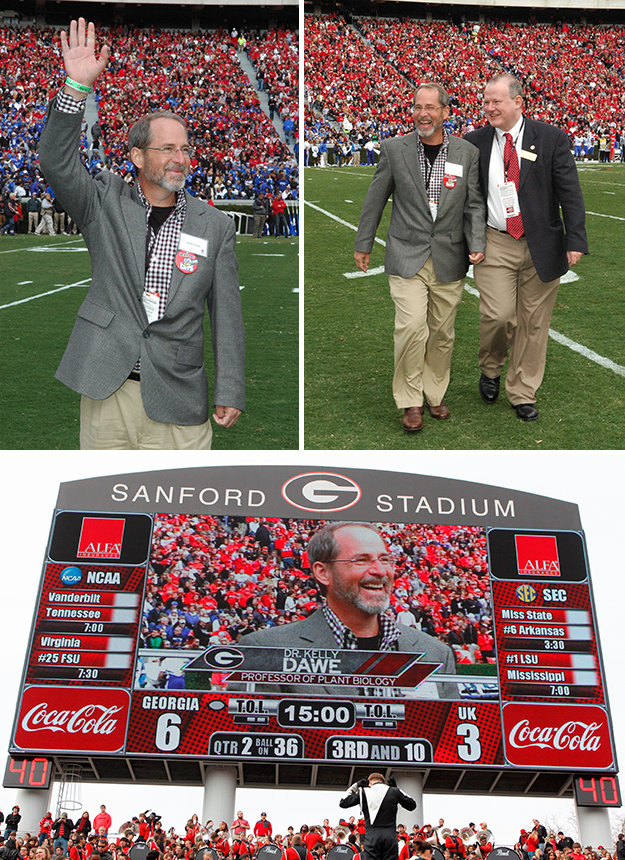
Recent publication in Nucleic Acids Research
Strong epigenetic similarity between maize centromeric and pericentromeric regions at the level of small RNAs, DNA methylation and H3 chromatin modifications.
Gent JI, Dong Y, Jiang J, Dawe RK.
ABSTRACT
Both kinetochore function and sister chromatid cohesion can depend upon pericentromere chromatin structure, and factors associated with heterochromatin have been proposed to have general, conserved roles in distinguishing centromeres and pericentromeres and in conferring pericentromere-intrinsic functions. We applied genome-wide sequencing approaches to quantify RNA expression, DNA methylation and histone modification distributions in maize (Zea mays), focusing on two maize chromosomes with nearly fully sequenced centromeres and pericentromeres. Aside from the presence of the Histone H3 variant common to all centromeres, Centromeric Histone H3 (CENH3), we found no RNA expression or chromatin modifications that clearly differentiate pericentromeres from either centromeres or from chromosome arms, nor did we identify an epigenetic signature that accurately predicts CENH3 location. RNA expression and chromatin modification frequencies were broadly associated with distance from centromeres, gradually peaking or dipping toward arms. When interpreted in the context of experimental data from other systems, our results suggest that centromeres may confer essential functions (such as cohesion retention) to flanking sequence regardless of the local heterochromatin profile.
Happy Halloween!
The Dawe Lab 2nd annual pumpkin carving:
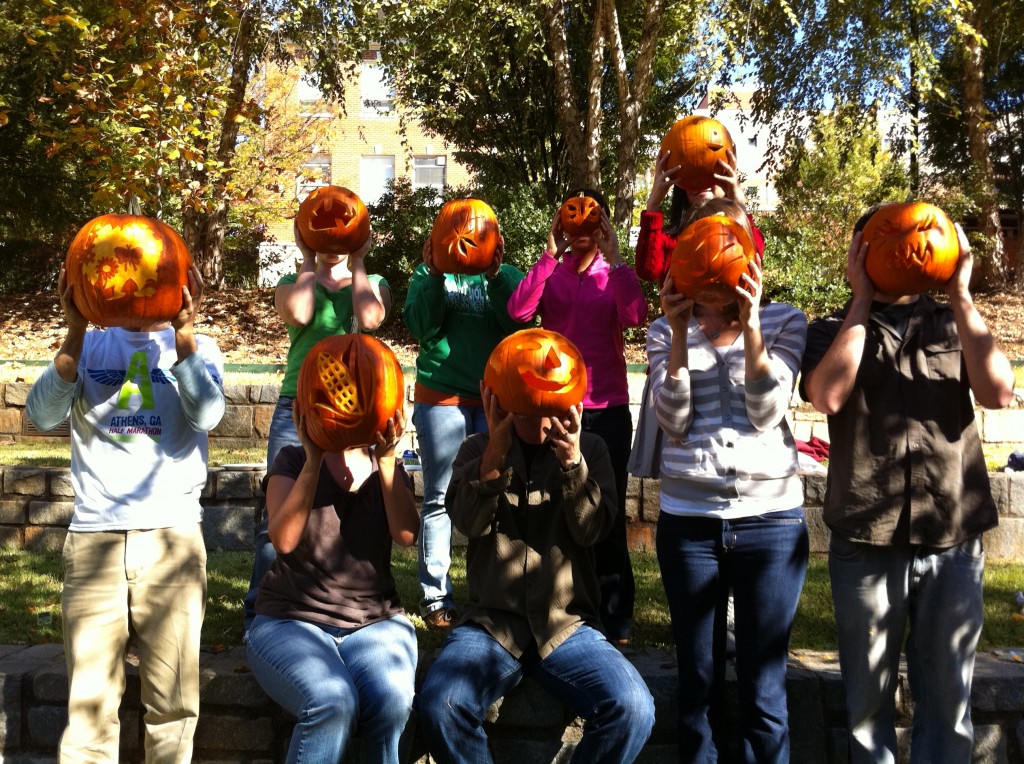
Our model organisms . . .
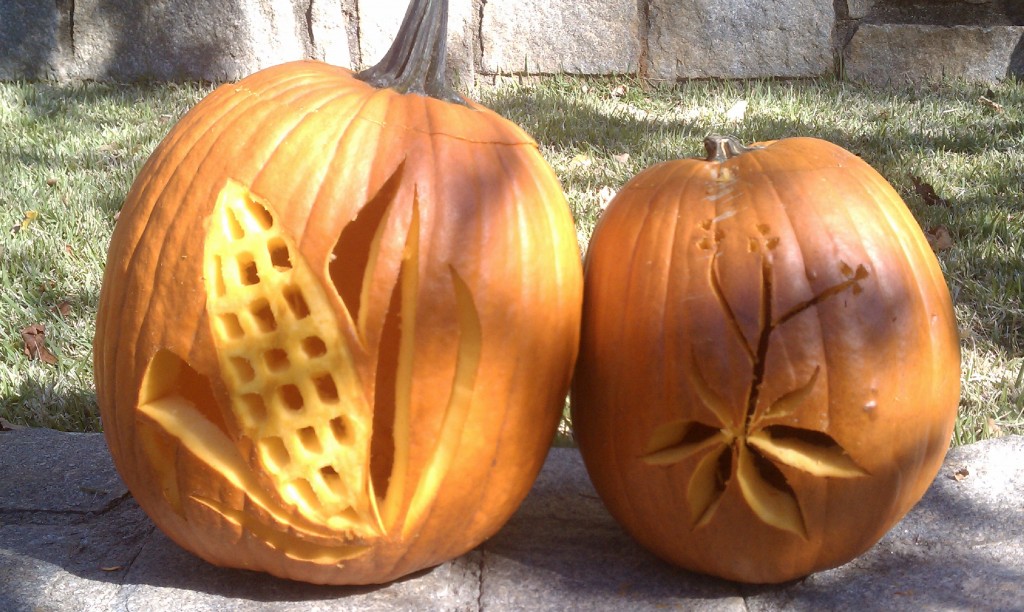

 The Dawe Lab
The Dawe Lab